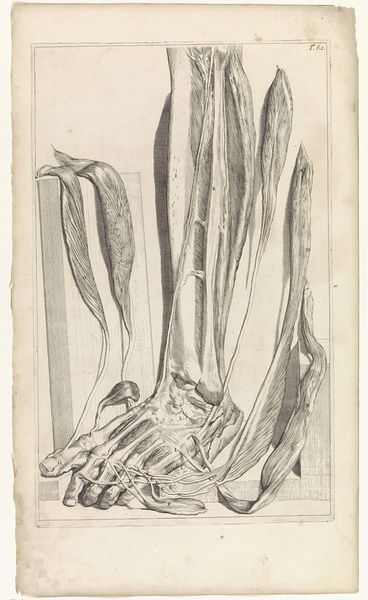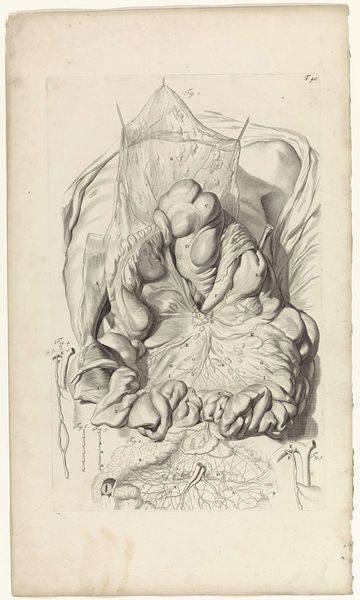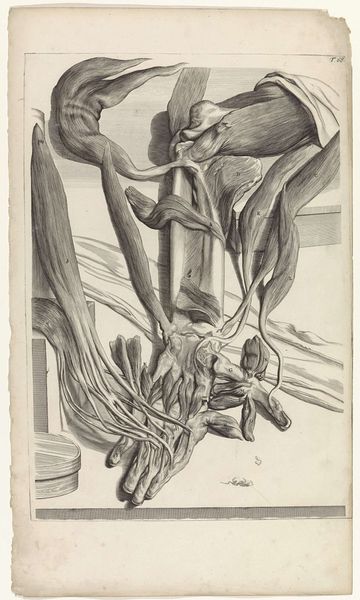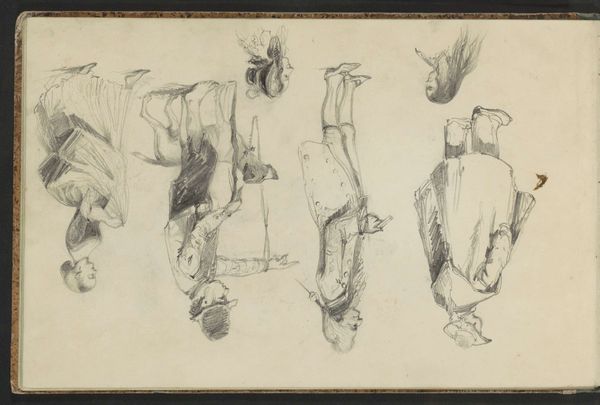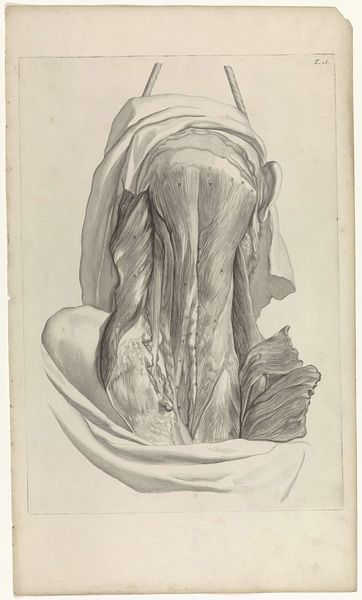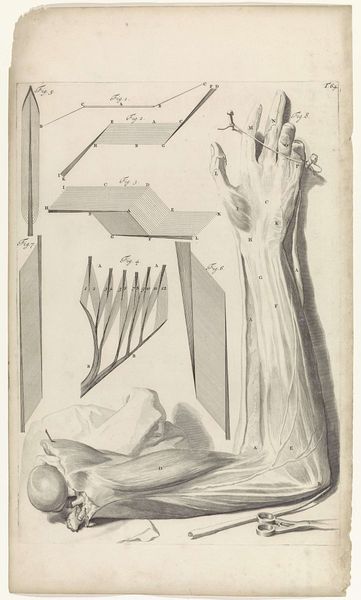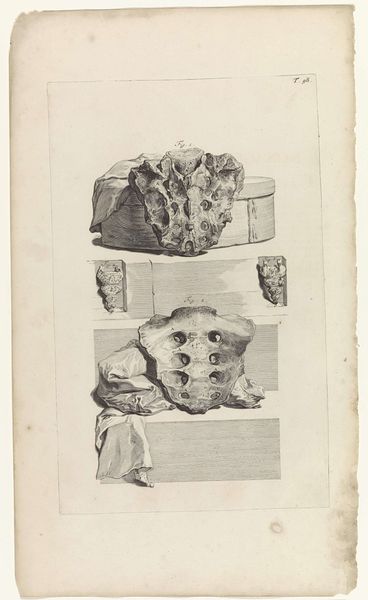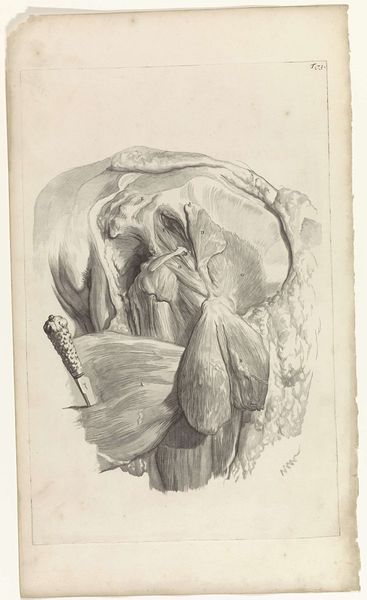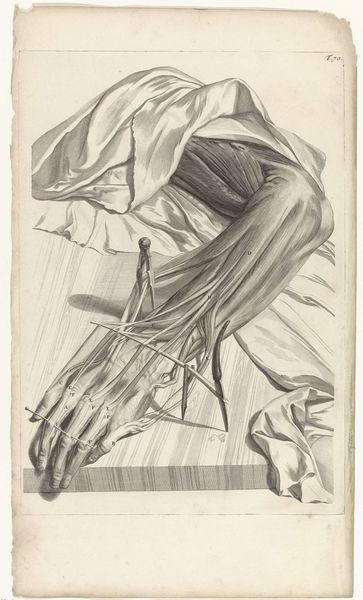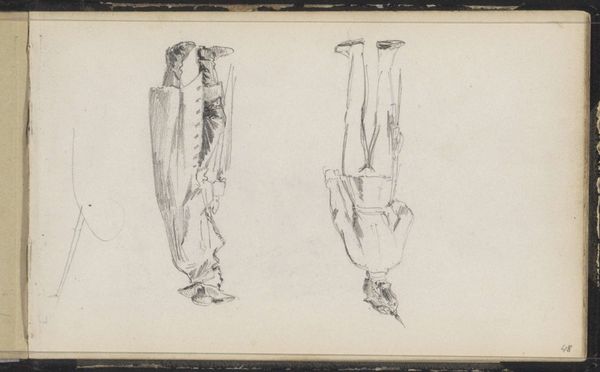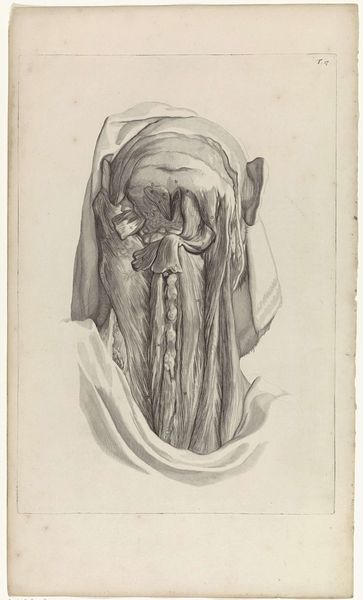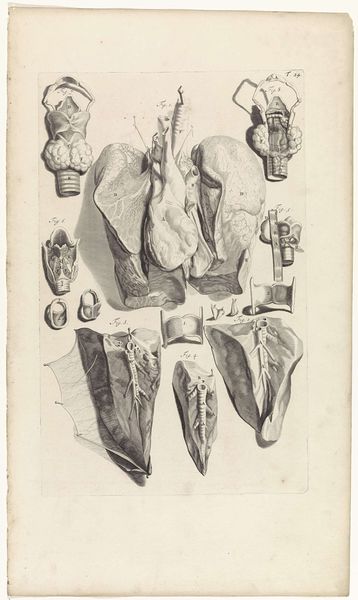
drawing, print, etching, graphite
#
portrait
#
drawing
#
baroque
# print
#
etching
#
figuration
#
form
#
11_renaissance
#
line
#
graphite
#
history-painting
#
academic-art
#
realism
Dimensions: width 299 mm, height 473 mm
Copyright: Rijks Museum: Open Domain
Curator: Here at the Rijksmuseum, we have Pieter van Gunst’s 1685 anatomical study of the right foot and toes rendered as an etching. What strikes you about it? Editor: It’s unsettling and beautiful simultaneously, isn't it? The precision with which the muscles and tendons are depicted gives it a scientific air, but the lack of skin or blood feels surreal. I keep wondering, what are feet, really, beyond how we see them and use them everyday? Curator: The etching exemplifies academic art traditions of its time. Such meticulous renderings weren’t just about biological accuracy; they were steeped in symbolic ideas about the human form as a mirror of the divine. You see echoes of form meeting spirit here, particularly from the Renaissance on. Editor: Definitely. The arrangement has that Renaissance touch. What I find striking is this dance between detached observation and underlying... intimacy? Like staring at a ghost of physicality. Curator: Think about the visual language, though. Line and form become philosophical tools here, almost transcending mere anatomy. The foot becomes a history-painting of sorts, speaking volumes on how we perceive reality. Even something as commonplace as feet. Editor: True. It makes me think of societal perceptions, too. Feet are so often hidden, considered unattractive—but here, they’re laid bare, both literally and figuratively. This takes feet out of the realm of mere function. It becomes something profound, stripped back to raw essentials. Did viewers back then respond the same? Curator: No doubt it challenged their preconceived notions. Images like these, distributed widely through printmaking, altered our perception of the physical self in tandem with nascent medical science. Remember, feet carried specific, gendered cultural weight: foot binding in certain societies, barefoot humility, the heroic "foot soldier". Each of these symbols had cultural currency. Editor: I'm finding my own continuity from these renderings to our medical diagrams today; they hold something universally human—both a fear of our physical selves and fascination. It's all in our stride! Curator: Absolutely, this image captures human duality! The rational dissecting gaze mixed with our emotional and perhaps psychological discomfort at seeing ourselves inside and out. I find the etching reminds me of cultural obsession that runs from folklore all the way through the halls of science. Editor: The kind of obsession that helps you question...what you really stand for? Okay, no more foot puns, I promise! Thanks for this intriguing conversation.
Comments
No comments
Be the first to comment and join the conversation on the ultimate creative platform.
